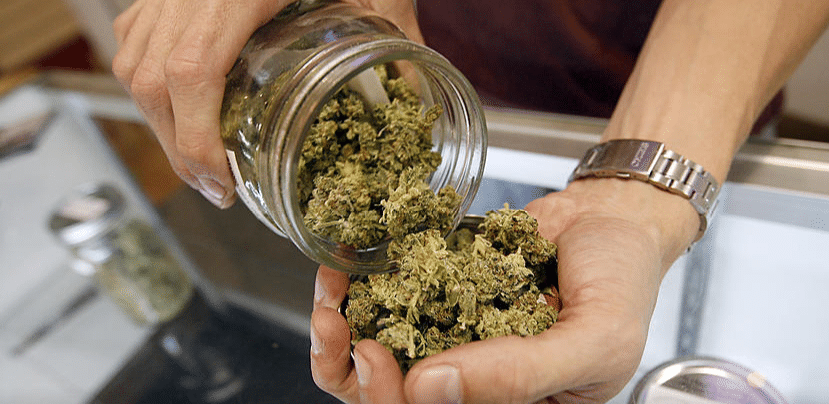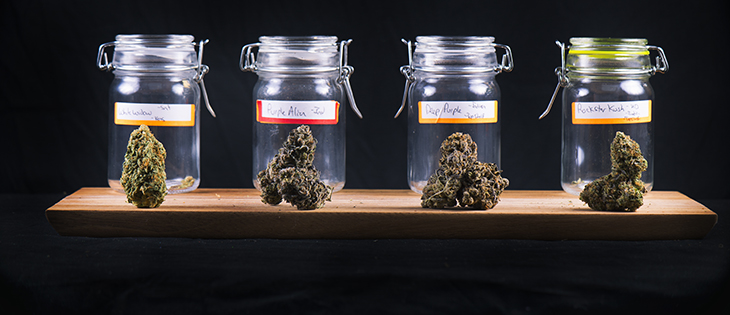Global sharemarkets are going to pot as a large number of marijuana companies have listed in recent years, including on the Australian sharemarket.
Cann Group, which listed on the ASX earlier this month, is trading at A57c a share compared with its A30c a share IPO price. This strong sharemarket performance is consistent with the performance of most listed pot companies over the past 12 months.
When are we going to see a marijuana company listed on the NZX? How long will it be before we have the opportunity to invest in companies that could be called Coromandel Gold and Northland Green?
There are over 50 cannabis companies listed on global markets, mainly in the United States and Canada. Their share price performance has been very strong, albeit volatile, over the last 12 months.
The 32 stock North American Marijuana Index, which contains 20 US and 12 Canadian companies, has risen 101 per cent since May 12, 2016.
However, this 12-month performance comprises a 174 per cent surge between May and October followed by a 27 per cent decline since then.
The largest Marijuana Index companies are as follows:
1) GW Pharmaceuticals – market value US$2.6 billion ($3.8b) – which has had a sharemarket return of 34 per cent over the past 12 months. The company has developed a number of cannabis-based prescription medicines including Sativex for the treatment of spasticity for multiple sclerosis. Sativex is legally available in New Zealand.
2) Canopy Growth Corporation C$1.4b ($1.5b) has delivered investor returns of 223 per cent year-on-year. The Ontario-based company produces a wide range of cannabis products. Its crop is grown on 16ha that formerly housed the famous Hershey Chocolate factory and the stock’s Toronto exchange code is WEED.CN.
3) Aurora Cannabis (C$814m), which has had a one-year return of 426 per cent, cultivates and sells Canadian medical marijuana. Aurora has a sharemarket value in excess of C$800m even though it reported revenue of just C$7m for the six months to December 2016.
4) Aphria (C$850m) has delivered a 330 per cent return to investors over the past 12 months. The company claims to be the first publicly licensed medical cannabis producer to report positive earnings in two consecutive quarters.
5) Cronos Group (C$323m) has produced a 1062 per cent year-on-year return. Cronos is licensed to produce and sell medical marijuana products and cultivate cannabis oil.
North American companies have benefited from the legalisation of medical marijuana and the ability of individuals to possess marijuana for their personal medical use. There is also heightened enthusiasm for the sector because Canadian Prime Minister Justin Trudeau has initiated steps to legalise recreational marijuana.
Medical and recreational marijuana has already been legalised in the US states of Alaska, California, Colorado, Maine, Massachusetts, Nevada, Oregon, Washington and Washington DC.
A September 2016 Bloomberg report projected that the legal US cannabis industry would generate revenue of US$50b by 2026 as lawful pot producers gain new customers and attract individuals currently using illicit products.
How long will it be before we have the opportunity to invest in companies that could be called Coromandel Gold and Northland Green?
Interest in pot companies has been heightened by the launch of the passive Horizons Medical Marijuana Life Sciences ETF on April 4. This ETF, which has a management fee of 0.75 per cent, seeks to replicate the performance of the North American Medical Marijuana Index, which is slightly different to the North American Marijuana Index. The ETF, which has total assets of C$116m, initially started at C$10 per unit, rose to a high of C$11.83 on April 10 but closed at C$9.65 on Thursday.
These individual sector ETFs are exaggerating the movement of individual share prices in their sectors.
Meanwhile, the ASX also has pot fever, the latest being the Cann Group IPO.
Cann is the first Australian company to secure a licence to cultivate cannabis for medicinal and research purposes under the Australian Government’s new medicinal cannabis regulatory system. The system has been implemented under the Narcotic Drugs Amendment Act 2016, which came into force on February 29 last year. This legislation allows cannabis cultivation for medicinal and related scientific purposes.
Cann’s business model, which does not expect to generate any meaningful revenue in the short term, involves the establishment and development of facilities to breed, cultivate, extract, manufacture and supply cannabis products.
The company issued new shares at A30c each and listed on the ASX on May 4. Aurora Cannabis, the Canadian company referred to above, is the largest shareholder with a 19.9 per cent stake. Cann’s share price hit a high of A82c on May 5 but has fallen back to close at A57c on Thursday, still 90 per cent above its IPO price.
This is consistent with the performance of pot companies in North America as developed world governments legalise medical cannabis and investors believe that recreational cannabis will be legalised in the years ahead.
The following is a brief description of the other ASX-listed marijuana companies with their closing Thursday share price, sharemarket values and one-year returns included in the accompanying table.
AusCann, which is a backdoor listing through wine operator TW Holdings, is focused on producing cannabis medication for chronic pain.
Botanix Pharmaceuticals, which was a reverse takeover through Bone Medical, is endeavouring to develop cannabidiol extract based products to treat epilepsy, pain and arthritis.
Creso Pharma listed on the ASX in October 2016 following the issue of shares through an IPO at A20c each. Creso’s strategy is to develop, register and commercialise pharmaceutical-grade cannabis and hemp-based products and treatments. The hemp- based products are derived from a fully-owned subsidiary in the Slovak Republic.
MGC Pharmaceuticals, which was a backdoor listing through the Perth gold explorer Erin Resources, is planning to produce and distribute a wide range of cannabidiol products on global markets.
Medlab Clinical listed on the ASX in July 2015 following an IPO at A20c a share.
The company produces a wide range of products with cannabis-based medicines being a relatively small part of its overall offerings.
MMJ Phytotech listed on the ASX in December 2014 following an IPO at A20c a share. The company had no sales revenue for the six months ended December 2016 but it owns 60 per cent of Toronto Stock Exchange-listed Harvest One Cannabis which is hoping to benefit from the legalisation of recreational cannabis in Canada.
Zelda Therapeutics, which was a backdoor listing through Perth based Gleneagle Gold, is studying the use of medical cannabis to treat a variety of medical ailments.
Most of the North American and Australian-listed pot companies are more about expectation and hope, rather than any major achievements to date in terms of revenue and profitability.
New Zealand’s attitude towards marijuana is much more conservative than Australia, Canada and the United States.
Cannabis growing remains illegal and only specific imported marijuana-based medicines are approved by the Ministry of Health.
Consequently, there is no immediate prospect of a pot company listing on the NZX although there are a large number of listed shell companies that could be converted into a Coromandel Gold or Northland Green.
Pot-based backdoor listings and/or IPOs are inevitable if the New Zealand Government moves to legalise cannabis, particularly NZ-produced medical marijuana products.














